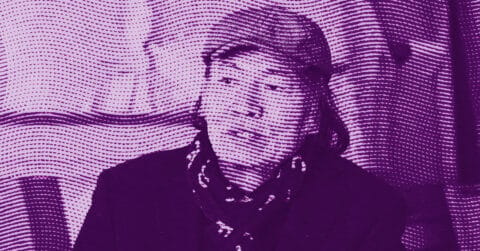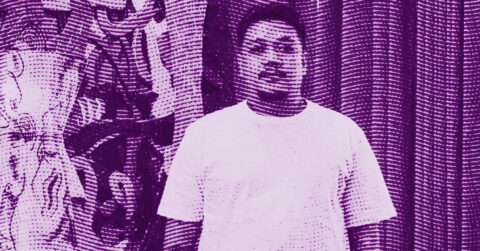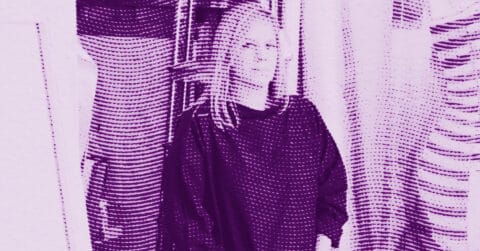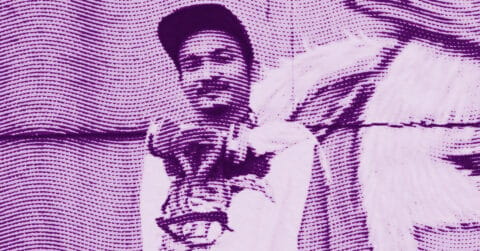Listen to me carefully, you bunch of snobs, the time has come to question one of the most subversive figures of contemporary German art. Cosima von Bonin has been conducting a sharp and joyful critique of our era for three decades, weaving with fierce intelligence a universe populated by cynical stuffed animals, padded missiles, and melancholy ducks. This artist born in Kenya in 1962 and trained in the vibrant Cologne art scene constructs a theatre of the absurd where the fundamental contradictions of contemporary capitalist society are revealed.
Her work unfolds like a vast project of diversion where every object becomes a pretext to question our consumption automatisms and social rituals. Through her textile installations, soft sculptures, and pop cultural diversions, von Bonin outlines a world where apparent innocence always hides a dull violence, where cuteness becomes a mask to denounce modern alienation. This approach finds a particularly striking echo in two theoretical domains that illuminate the reach of her work: the critical sociology of the society of spectacle and the literary theory of intertextuality.
The sociology of spectacle: When Daffy Duck becomes a prophet
Cosima von Bonin’s work strikes a strong chord with the sociological critique developed by Guy Debord in “The Society of the Spectacle” [1]. When Debord wrote in 1967 that “the whole life of societies in which modern conditions of production prevail presents itself as an immense accumulation of spectacles,” he perfectly anticipated the universe depicted by von Bonin today. The German artist literally materializes this intuition of Guy Debord by transforming our entertainment icons into ruthless revelations of our social condition.
Take the central example of Daffy Duck, a recurring character in von Bonin’s work, notably in her series “Open Your Shirt Please” (2019) or in the imposing sculpture “Church of Daffy” (2023). This anthropomorphic duck perfectly embodies what Debord calls “commodity as spectacle.” Daffy is not simply a hijacked cartoon character: for von Bonin she becomes the emblem of our age, that of the individual perpetually performing, oscillating between megalomania and crushing failure. As Clara Drechsler writes, “there’s no one who would prefer to be Daffy rather than Cosima. Unfortunately, the required qualities are not pronounced enough in her. But perhaps they share the same demons.”
This spectacular dimension extends to the entire menagerie of von Bonin. Her giant stuffed animals, her musician fishes equipped with guitars, her anthropomorphic marine creatures function as so many “pseudo-events” in the sense Debord means this term. They create a false activity, a pseudo-life that masks the absence of authentic experience. The installation “What If It Barks?” (2018) perfectly illustrates this logic: colorful fish form a fake music band, turning art into superficial entertainment while revealing, through this very staging, the artifice of our contemporary leisure activities.
The artist goes even further in this analysis by tackling the symbols of power and violence. Her missiles transformed into cozy stuffed animals in the series “The Loser” directly question what Debord calls “the imposed image of the good.” These weapons of mass destruction converted into comfort objects reveal the hypocrisy of a society that aestheticizes violence while cultivating the illusion of consumerist softness. Von Bonin operates here a true “psychic geography” of our era, to borrow Debord’s expression, mapping the territories where modern alienation unfolds.
The collaborative dimension of her work also fits into this critical perspective. When von Bonin entrusts the creation of her works to professional artisans, when she consciously delegates the material production, she reveals the mechanisms of the division of labor that Debord identifies as the foundation of the spectacular society. The artist becomes the conductor of a productive system that she unveils in its very operation, questioning the notions of authenticity and authorship dear to the art market.
This approach finds its culmination in her installations where what she calls “the Empire of Fatigue” reigns. These spaces inhabited by exhausted creatures, soft objects, and slumped characters constitute a direct response to the constant injunction to perform that Debord identifies as characteristic of the spectacular society. Von Bonin proposes an aesthetics of passive resistance, of claimed idleness, which constitutes a form of political resistance to the hyperactivity imposed by contemporary capitalism.
Von Bonin’s genius lies in her ability to use the very codes of the spectacle to reveal its mechanisms. Her works function as “situations” in the Situationist sense, creating moments of rupture in the continuous flow of images and commodities. They force the spectator to become aware of her position as a passive consumer while offering her critical tools to escape it. By transforming the gallery into a “supermarket of art,” to borrow her own metaphor, von Bonin reveals the intimate links between culture and commerce, between creation and commodification.
Intertextuality as a strategy of resistance
Cosima von Bonin’s work finds a second key of interpretation in the theory of intertextuality developed by Julia Kristeva [2]. When Kristeva defines intertextuality as “a textual interaction that allows considering different sequences of a specific textual structure as so many transformations of sequences taken from other texts,” she precisely describes von Bonin’s method. The artist never creates ex nihilo: she reorganizes, diverts, recomposes an existing visual and cultural heritage to reveal its internal tensions.
This practice of assumed appropriation runs through her entire body of work. Von Bonin openly claims that “everything is stolen” in her work, turning artistic theft into a critical gesture. Her references range from the Looney Tunes to Disney icons, from conceptual art of the 1970s to luxury fashion codes. This referential polyphony creates what Kristeva calls a “new fabric of obsolete quotations,” where each borrowed element acquires a new meaning through its insertion into a contemporary artistic context.
The example of Bambi perfectly illustrates this intertextual logic. In her works “Gaslighting” and “Love Bombing” (2023), von Bonin takes up the silhouette of Disney’s fawn but associates it with terms derived from the vocabulary of psychological violence. This collision between the supposed innocence of the character and the brutality of contemporary concepts creates a defamiliarization effect that reveals the mechanisms of manipulation at work in mass culture. The diversion functions here as a “transposition,” to use the term Kristeva sometimes substitutes for intertextuality, that is to say as a “breach of subject and object” which reveals the hidden ideologies of the source texts.
This intertextual dimension extends to the artistic practices themselves. When von Bonin reprises the motif of Martin Kippenberger’s streetlamp in “The MK 2 Formula #303” (2014), when she cites Mike Kelley in “Mike Kelley is my Goddess” (2023), she situates her work within an artistic genealogy that she questions and extends simultaneously. These references are not respectful homages but critical reappropriations, according to the principle of transformative intertextuality theorized by Kristeva.
The artist also develops a consciously musical intertextuality, notably in her collaborations with Moritz von Oswald or her references to Missy Elliott and Britney Spears. These borrowings create complex networks of meaning where high culture and popular culture collide, artistic avant-garde and mass entertainment. Von Bonin thus operates a “redistribution of language,” in the sense Kristeva gives the term, reorganizing established cultural codes to reveal their critical potentialities.
The textile dimension of her work reinforces this intertextual logic. Her “Lappen” (ragged cloths) assemble fabrics from diverse origins according to a patchwork logic that literally materializes the principle of intertextuality. Each fragment of fabric carries within it a history, previous uses, social meanings that von Bonin reactivates and recomposes. These works function as testimonies in which traces of earlier texts/fabrics shine through the new artistic configuration.
Intertextuality in von Bonin’s work is not limited to borrowing: it constitutes a true strategy of cultural resistance. By revealing the mechanisms of appropriation and diversion, she demystifies the notion of artistic originality and questions the intellectual property logics that govern the art market. Her works function as “critical machines” that deconstruct and reconstruct the common cultural heritage, revealing the power relations that structure the production and dissemination of images.
This approach finds its political dimension in its ability to reveal what Kristeva calls the “geno-text,” that is to say the deep structures that organize the production of meaning. By diverting the codes of popular culture, von Bonin reveals the ideologies that underlie them, the mechanisms of domination they convey. Her anthropomorphic creatures thus become social analyzers that decode dominant representations and reveal their internal contradictions.
Art as a laboratory of disenchantment
Cosima von Bonin’s work thus outlines the contours of an aesthetic of disenchantment that draws its strength from the articulation between sociological critique and intertextual practice. Her installations transform the exhibition space into an experimental laboratory where the mechanisms of contemporary society are revealed. The artist performs a true “anatomy of the present,” to borrow an expression from Guy Debord, dissecting with surgical precision the representations that structure our relationship with the world.
This analytical dimension is coupled with a poetics of resistance that rejects the ease of direct denunciation. Von Bonin prefers the path of biting irony and joyful subversion, creating images that function as semantic “time bombs.” Her works reveal their critical dimension not through the explicitness of their message but through the confrontation they organize between different cultural registers.
The originality of her approach lies in her ability to use the adversary’s weapons against itself. By reclaiming the codes of mass culture, appropriating the icons of contemporary entertainment, she reveals the flaws and contradictions of the system she critiques. Her creatures become cultural “Trojan horses” that infiltrate the circuits of art to disseminate a renewed critical consciousness.
This strategy finds its effectiveness in its ambivalent dimension. Von Bonin’s works seduce through their apparent innocence while deploying an unrelenting critique of our social behaviors. They create what could be called a “critical pleasure,” where aesthetic enjoyment becomes the vehicle for political awareness. The artist thus reveals the subversive potentialities of contemporary art, its capacity to transform contemplation into an act of resistance.
Von Bonin’s legacy for future generations of artists lies in this masterful demonstration that it is possible to combine critical rigor and aesthetic pleasure, conceptual rigor and creative fantasy. Her work traces an alternative path to the dead ends of dogmatic conceptual art as well as those of commercial entertainment, proposing a third way where social critique flourishes in creative jubilation.
This lesson resonates with particular acuity in our era of technological acceleration and cultural standardization. Von Bonin reminds us that art retains its transformative capacity provided it never renounces its critical dimension nor its poetic vocation. She shows us that it is possible to resist dominant logics not through frontal confrontation but through smiling subversion, through the diverted appropriation of established codes.
Her work thus constitutes a precious antidote to contemporary melancholy, offering a form of joyful resistance to the mechanisms of alienation that surround us. She invites us to rediscover our capacity for critical amazement in the face of the world, to cultivate the creative unease that alone can preserve us from resignation. In this, Cosima von Bonin asserts herself as one of the most necessary voices in contemporary art, one that reminds us that beauty and truth remain inseparable, including, and especially, in a world that seemed to have renounced their demands.
- Guy Debord, The Society of the Spectacle, Paris, Buchet-Chastel, 1967.
- Julia Kristeva, Sèméiôtikè. Recherches pour une sémanalyse, Paris, Seuil, 1969.
















